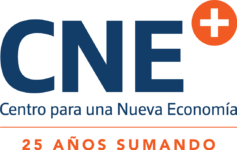
Published on April 21, 2023 / Leer en español
Special Edition
Puerto Rico at a Crossroads
And Lessons from Latin America
CNE has partnered with the Yale Economic Growth Center (“YEGC”), the Tobin Center for Economic Policy at Yale University (“TCEP”), and the Yale Center for the Study of Race, Indigeneity, and Transnational Migration (“RITM”) to work on identifying the policies, programs, and strategic investments that will be necessary to restart sustainable economic growth in Puerto Rico. On April 6 and 7, we held the first of what we hope will be several engagements with the YEGC, the TCEP, and RITM by bringing together scholars from Puerto Rico and the United States to collaborate in a series of dialogues or knowledge exchanges where lessons from theory and practice could be drawn, where successful examples from the island and the rest of the world could be discussed, and where opportunities for their implementation could be considered. Specifically, the dialogues held in early April focused on four key areas: fiscal policy, human capital and labor markets, inequality, and trade policy.
During the evening of April 6, professors Gustavo Bobonis of the University of Toronto and Harold Toro of Notre Dame University, together with Mike Soto, president of CNE, Deepak Lamba Nieves, CNE’s Research Director, and Sergio Marxuach, Policy Director at CNE, collectively provided an update of the current situation in Puerto Rico to several of the participants in the conference.
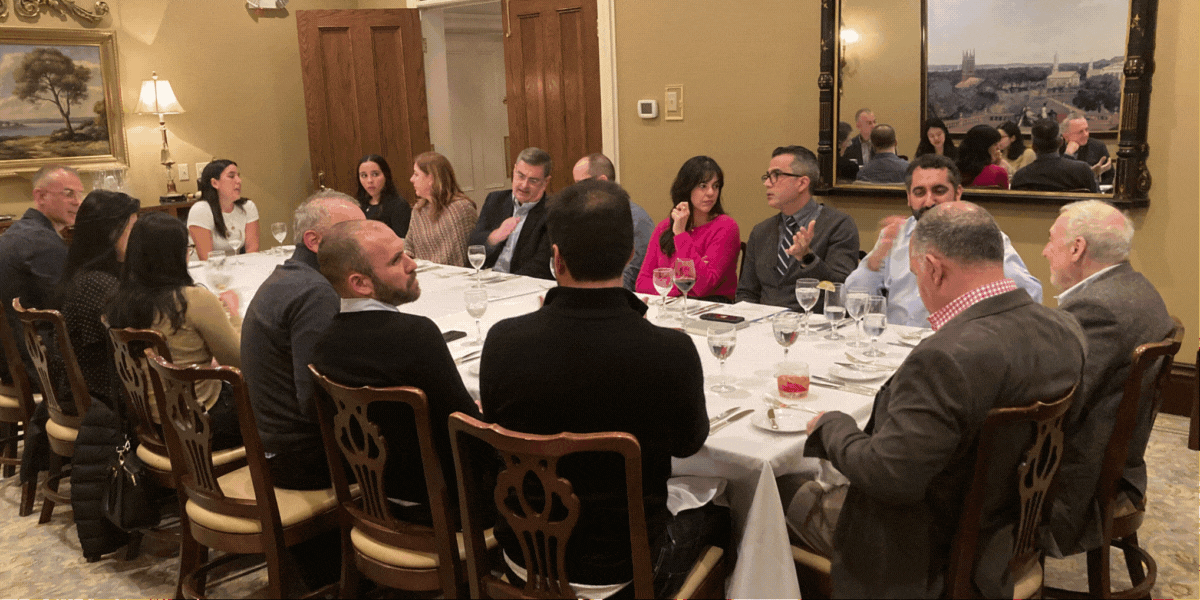
On the morning of April 7, at a session held in the new facilities of the TCEP at Yale University, Martin Guzmán, professor of economics and public policy at Columbia University and Andrew Metrick, professor of finance and management at Yale University, led a discussion of Puerto Rico’s fiscal situation, its most recent fiscal plan, and its implications for future growth.
That roundtable was followed by Professor Bobonis’s presentation of some of the results of a random control trial he has been leading and which is designed to test the efficacy of certain interventions to improve the administrative and management capabilities of public school directors in Puerto Rico. Professor Christopher Neilson from Yale then provided an interesting analysis and description of similar policy interventions in Chile.
Next, Professor Zadia Feliciano from Queens College of the City University of New York and Professor Amit Khandelwal from Yale engaged in a lively analysis of the consequences of the elimination of section 936, discussed the importance of similar tax incentives to grow the manufacturing sector in Puerto Rico, and reviewed the types of incentives that have been successful in other jurisdictions.
Finally, the morning session concluded with a presentation by Professor Toro about inequality in Puerto Rico and a response from Orazio Attanasio, Cowles Professor of Economics at Yale, who focused on the different types of inequality (income, wealth, health, political power) and their impact on economic growth.
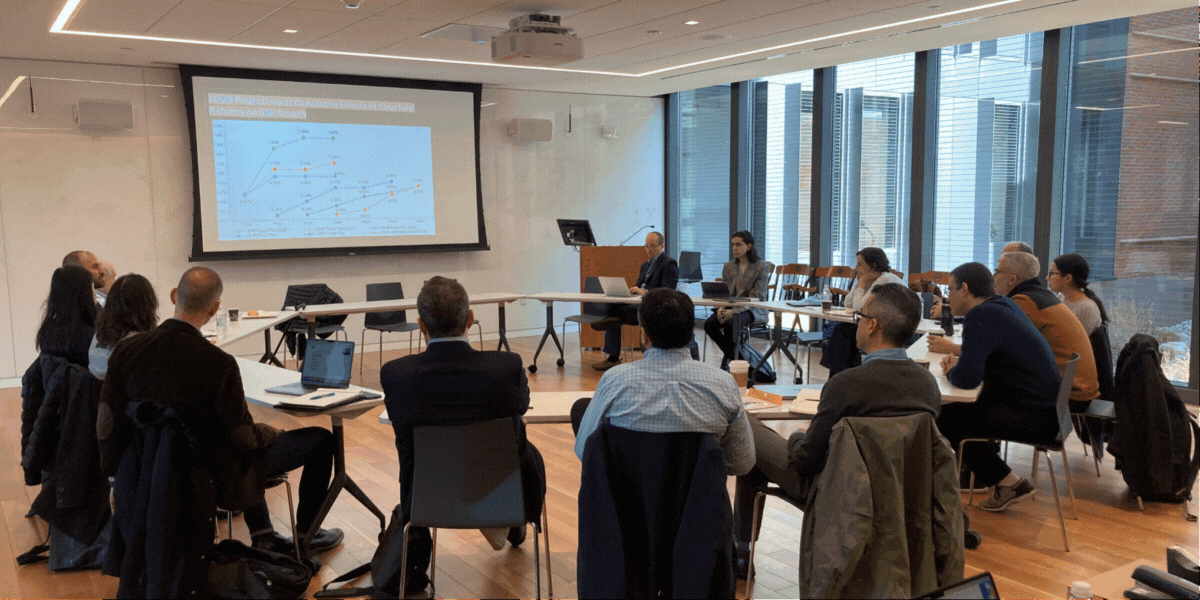
During the afternoon, we held a session with presentations from Professor Attanasio of some findings of the Latin America and Caribbean Inequality Review (“LACIR”), a large-scale scholarly project to understand inequality in the Latin American and Caribbean region and Professor Raquel Fernandez from New York University, who spoke about the intersection of educational and gender inequality and presented some very interesting findings on these areas from the LACIR project.
These interesting presentations were followed by a keynote lecture by Joseph E. Stiglitz, Nobel laureate and professor of economics at Columbia University, entitled Austerity, Climate Change, and Colonialism in Puerto Rico. Professor Guzmán closed up the afternoon with some remarks regarding the effectiveness (or lack thereof) of several structural economic reforms that have been proposed by the Fiscal Oversight and Management Board for Puerto Rico.
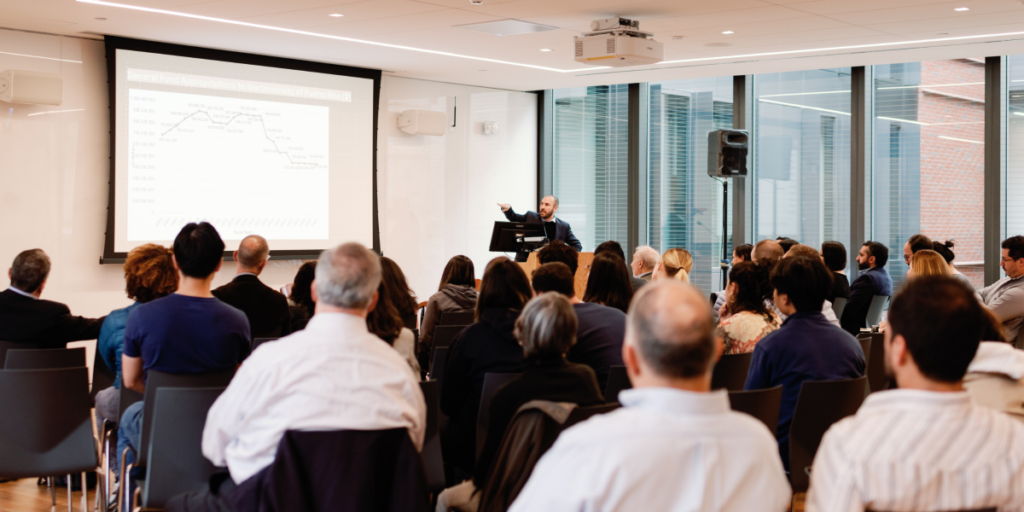
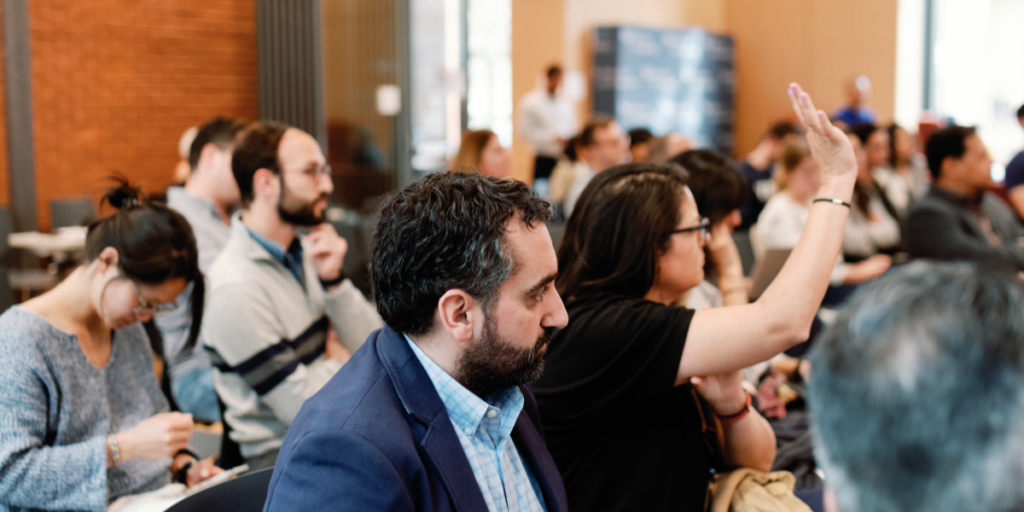





Puerto Rico’s economy has undergone a long dark winter since 2006. During the last 15 years, the island’s real Gross National Product (“GNP”) has declined by 22%; total employment has decreased by 17.2%; and its population has shrunk by 14.5%. That kind of deep secular decline is the product of a multiplicity of interacting factors.
First, during the early years of the 21st century, it became evident that Puerto Rico’s “economic model” had run its course. Those advantages that were specific to Puerto Rico in the early post-war period had either disappeared, in the case of cheap labor, or ceased to be unique to Puerto Rico, in the case of a stable exchange rate.
In addition, the tax advantages Puerto Rico enjoyed under Section 936 of the U.S. Internal Revenue Code were phased out by 2006; government employment was pushed to its upper limits; public indebtedness reached unsustainable levels; and federal transfers to the island depend on and are subject to the political dynamic in Washington, where Puerto Rico has only nominal representation.
Third, the intensification of global capital, trade, and migratory flows eroded the advantages tied to Puerto Rico’s special access to the U.S. market, which drove Puerto Rico’s postwar growth, without giving rise to new opportunities that Puerto Rico was able to capitalize on, given its subordinated political status.
Finally, the island experienced a series of shocks that further undermined economic activity and growth. Congress appointed an unelected Oversight Board in 2016 to implement a fiscal consolidation program and the island’s central government filed for a bankruptcy-like process in 2017 to restructure its debt. That same year, Hurricanes Irma and Maria wreaked havoc on the island’s public and private infrastructure, damage that was compounded by several earthquakes in 2020. And, in addition to all of the above, the island was also hit hard by the COVID-19 pandemic between 2020 and 2022.
However, after 15 years of stagnation, a series of events have converged to create a propitious environment to turn around Puerto Rico’s economy. The process to restructure the island’s central government public debt has ended. The court-certified Plan of Adjustment provides significant debt relief and substantial fiscal space to the island by cutting the Commonwealth’s debt by approximately 50%. The Biden administration has proven to be willing to accelerate the disbursement of federal funds to finance hurricane reconstruction efforts. The worst of the COVID-19 pandemic appears to be over. And, finally, the intellectual and political turn towards a more activist state — as evidenced by the enactment of the Bipartisan Infrastructure Act, the CHIPS and Science Act, and the Inflation Reduction Act — affords Puerto Rico the necessary policy space to develop and implement creative solutions to its economic problems.
It is in this context that CNE partnered with the YEGC, the TCEP, and RITM.
All things considered, we had a productive two days of analysis, dialogue, and deep thinking about Puerto Rico’s economy, activities that are oftentimes belittled in the island’s public discourse. While it has become commonplace to say that “Puerto Rico doesn’t need any more studies”, the fact is that there are a lot of things about the island’s economy that we only partially understand and some others that we really do not know at all. This conference, then, was a first important step in what will be a multi-year effort, led by CNE, to fill these intellectual lacunae and develop evidence-based policies to jumpstart sustainable economic growth in Puerto Rico.
Obviously, there is still a lot of work that remains to be done to turn around Puerto Rico’s economy. But there is reason to believe that the island’s long cold economic winter is finally coming to an end. It is only fitting and proper then that this conference took place in early spring, the eternal season of renewal and rebirth.
–Sergio M. Marxuach, Editor-in-Chief
